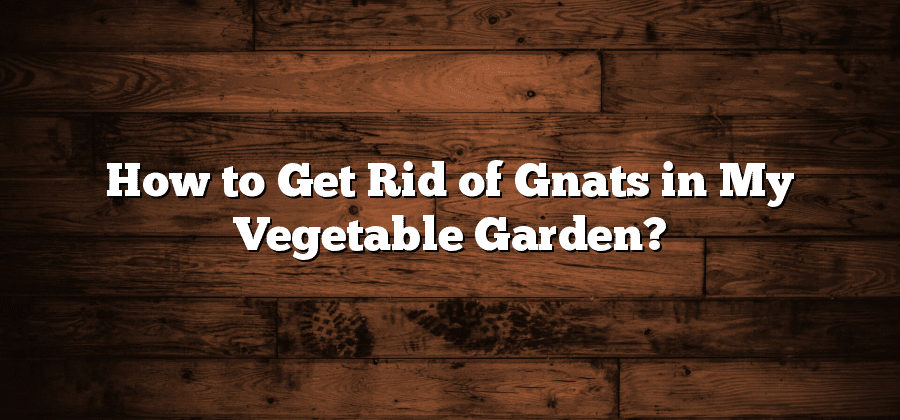Identifying Gnats in Your Vegetable Garden
Gnats can be a common nuisance in vegetable gardens, but identifying them accurately is the first step in effectively dealing with these tiny pests. They are small, flying insects that resemble tiny flies and often gather in large numbers. Gnats typically have long, slender bodies and long legs. They are usually black or gray in color and have transparent wings. Their size can range between 1/8th to 1/10th of an inch, making them quite difficult to spot individually.
To differentiate gnats from other similar insects, it is essential to observe their behavior. Gnats are commonly found hovering around damp or moist areas, as they are strongly attracted to decomposing organic matter and damp soil. They are most active during the warmer months and are particularly abundant in areas with high humidity levels. Additionally, gnats are known for their swift and erratic flying patterns, often seen darting in and out of plants and hovering near the soil surface. By carefully observing these physical characteristics and behaviors, you can accurately identify the presence of gnats in your vegetable garden.
Understanding the Life Cycle of Gnats
The life cycle of gnats is a fascinating process that sheds light on their ability to quickly multiply and infest your vegetable garden. Understanding this life cycle can help you better control and prevent gnat infestations. Gnats go through four main stages in their life cycle: egg, larva, pupa, and adult.
During the first stage, gnats lay their eggs in moist soil or decaying organic matter. These tiny eggs are barely visible to the naked eye and hatch within a few days. Once the larvae emerge, they immediately start feeding on organic matter, such as decaying plant material or fungi. They possess a unique feeding apparatus that allows them to break down organic material and extract nutrients. As the larva grows, it molts several times, shedding its exoskeleton to accommodate its increasing size. This growth stage can last anywhere from one to three weeks, depending on environmental conditions.
As the larvae approach their final growth stage, they enter the pupal stage. During this time, the gnat is encapsulated in a protective cocoon-like structure. Inside this cocoon, the larva undergoes metamorphosis, transforming into an adult gnat. The pupal stage is relatively short, typically lasting only a few days. Finally, the adult gnat emerges from the cocoon, and the cycle begins anew.
Understanding the life cycle of gnats is crucial for effective gnat control strategies. By identifying the different stages and understanding their preferences for breeding grounds, you can implement targeted measures to disrupt their life cycle and prevent future infestations.
Determining the Cause of Gnat Infestation
One common cause of gnat infestation in vegetable gardens is overwatering. Gnats thrive in moist environments, so if your garden soil is consistently damp, it can attract these pesky insects. Overwatering not only promotes the growth of gnats but also creates favorable conditions for other pests, such as fungus gnats, to breed and multiply. It is essential to strike the right balance when it comes to watering your vegetable garden to prevent gnat infestations.
Another potential cause of gnat infestation in vegetable gardens is the presence of decaying organic matter. Gnats are attracted to decomposing plant material, including fallen leaves, rotting fruits, and vegetables, as they provide a food source for their larvae. If you notice an abundance of gnats in your garden, it is crucial to remove any decaying organic matter promptly. Regularly clean up fallen plant debris and dispose of it properly to help reduce the likelihood of gnat infestations.
Implementing Proper Watering Techniques
Proper watering techniques are essential for maintaining a healthy vegetable garden and minimizing the presence of gnats. Firstly, it is crucial to water your plants at the base, directly at the soil level. This prevents excess moisture on the foliage, which can attract gnats. Additionally, avoid overwatering your plants, as this can create stagnant water that becomes a breeding ground for gnats. Instead, water your vegetables thoroughly but allow the soil to dry out slightly between waterings.
Furthermore, consider implementing a watering schedule that mimics natural rainfall patterns. Watering in the early morning or late afternoon allows time for the foliage to dry before nightfall, reducing the chances of attracting gnats. It is also helpful to use a watering can or drip irrigation system rather than overhead sprinklers, as this delivers water directly to the soil without dampening the leaves. By following these proper watering techniques, you can create a less hospitable environment for gnats and improve the overall health of your vegetable garden.
Using Organic Pest Control Methods
When it comes to dealing with pesky gnats in your vegetable garden, utilizing organic pest control methods is not only effective but also a sustainable approach. These methods prioritize the use of natural substances and techniques to reduce gnat populations without harming beneficial insects or exposing your plants to harmful chemicals.
One of the most popular organic pest control methods for gnats is the use of beneficial nematodes. These microscopic roundworms target the larvae of gnats, effectively reducing their populations. By adding these nematodes to the soil, you can naturally control the gnat infestation in your vegetable garden. Additionally, using sticky traps can also prove to be helpful in capturing adult gnats and preventing them from reproducing. These traps can be placed strategically around your garden to lure and trap the gnats, thereby reducing their numbers over time.






